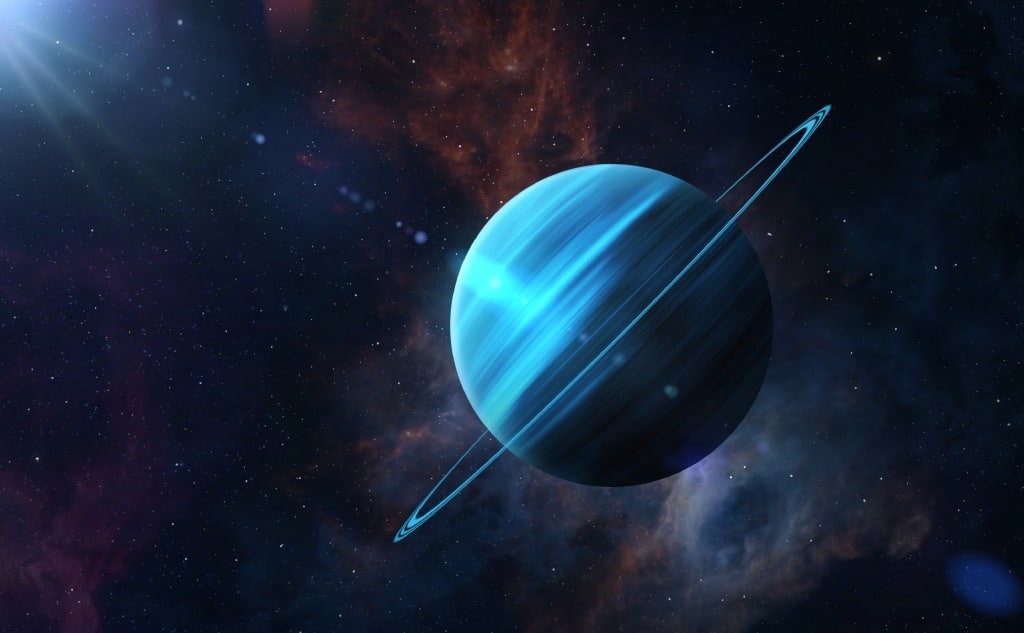Uranus is the coldest planet in the solar system its average temperature is 371 degrees fahrenheit 224 degrees celsius

Introduction
Uranus, the seventh planet from the Sun, holds a fascinating title in our Solar System. It is known for being the coldest planet, with an average temperature that plummets to a bone-chilling -371 degrees Fahrenheit (-224 degrees Celsius). This frigid atmosphere sets Uranus apart from the other celestial bodies in our cosmic neighborhood. In this article, we will delve into the intriguing characteristics of Uranus and explore the reasons behind its icy climate.

Uranus: A Chilling Mystery
Uranus, a gas giant planet, is characterized by its distinct pale blue color. It is often referred to as an “ice giant” due to its primarily icy composition. While this chilly nature is undoubtedly captivating, understanding the factors responsible for Uranus’ extreme coldness requires us to dive deeper.
The Atmospheric Peculiarities of Uranus
One key factor contributing to Uranus’ frosty temperatures is its unique atmosphere. Composed mainly of hydrogen and helium, with traces of methane, this gaseous envelope demonstrates unusual characteristics. Unlike Jupiter and Saturn, whose atmospheres consist primarily of hydrogen and helium, Uranus has a higher proportion of methane.

Methane plays a crucial role in determining Uranus’ temperature. It acts as a barrier, preventing the Sun’s heat from penetrating deep into the planet’s atmosphere. Consequently, the limited solar radiation absorbed by Uranus contributes to the extreme cold experienced on its surface.
The Uniqueness of Uranus’ Tilt
Aside from its atmospheric composition, Uranus possesses a distinctive tilt that sets it apart from other planets in the Solar System. Unlike most celestial bodies, Uranus rotates on its side, almost lying down as it orbits the Sun. This axial tilt is approximately 98 degrees, leading to peculiar seasonal changes.
During its 84-year-long orbit, Uranus experiences lengthy periods of sunlight and darkness. Each pole basks in continuous sunlight for a quarter of the planet’s year, while the other pole endures perpetual darkness. These prolonged periods of low solar radiation contribute to the freezing temperatures found on Uranus.
The Absence of Internal Heat Sources
Unlike some other planets, such as Jupiter and Saturn, Uranus lacks a substantial internal heat source. Planets like Jupiter emit more heat than they receive from the Sun, resulting in higher temperatures. In contrast, Uranus emits less heat than it absorbs, contributing to its colder climate.
The absence of internal heat mechanisms and limited solar radiation make Uranus the coldest planet in our Solar System.
Conclusion
In conclusion, Uranus undoubtedly holds its place as the coldest planet in our Solar System. With an average temperature that plummets to a chilling -371 degrees Fahrenheit (-224 degrees Celsius), it stands apart from its cosmic companions. The unique combination of factors, including its atmospheric composition, axial tilt, and the absence of substantial internal heat sources, contribute to Uranus’ frigid climate. As we continue to explore and unravel the mysteries of our celestial neighborhood, the fascinating characteristics of Uranus provide us with valuable insights into the diverse worlds that exist beyond our own.
Source: nineplanets.org
Related Posts
Quick Links
Legal Stuff

